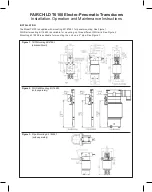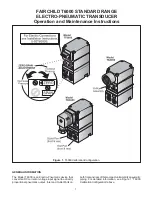
SATEL-TR489
Integration Guide, Version 0.9
26
5.1
Fixing device to host
The radio transceiver module can be mounted on to the host application by using spacers and
screws. It is highly recommended to use conducting metal spacers and screws to create proper
electrical conductivity between the module and the host application. Recommended materials
for spacers include brass or aluminum and steel screws. User must take care that there is no
excessive mechanical stress created to the DTE connector while inserting and attaching the
module. Recommended maximum screw size is M3, minimum spacer height between the
module and the host application is 3 mm.
Figure 5.1 Example of module attachment to application PCB.
5.2
Heat transfer
Since the module creates heat while operating, it must take into consideration to maximize the
heat transfer from the module to an external heat sink. Proper heat sinking methods could be
copper plated PCB, metal housing or a heat sink piece. The most recommended solution is to use
a metal conductor to transfer heat from the module to an external heat sink which dimensions
and location is adequate for a proper performance. To source the heat from the module is the
plain area next to the antenna connector shown in a figure 5.2. Heat can be conducted from
either side. To further improve the heat conductivity and reducing the heat transfer barriers,
proper heat conducting paste or heat conducting tape should be used.
Figure 5.2 Heat sourcing area, both sides
5
MECHANICAL CONSIDERATIONS














































